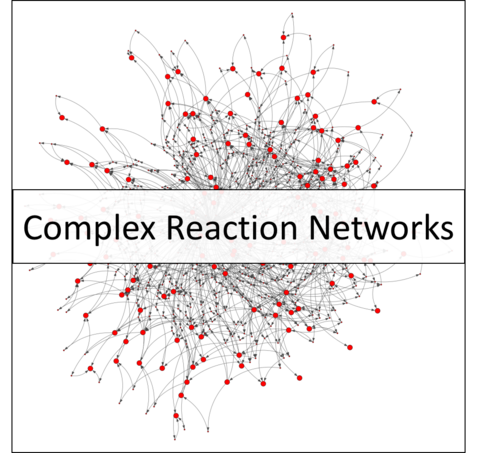Complex Reaction Networks

Chemical processes in nature and catalysis are often described by a set of coupled elementary reaction steps, the so-called the reaction network. Understanding the kinetics of these elementary steps provides important insight into how complex chemical processes take place, and how they can be influenced, e.g. through a catalyst. The problem, however, is that even a comparatively simple process like the syngas reaction (catalytic conversion of H2 and CO) leads to an enormous number of potentially relevant elementary reaction steps. In practice, only reduced models of the reaction network are therefore studied. This is justified, because only a small fraction of the possible reaction steps will actually be relevant to the kinetics of the process. Unfortunately, there is no general recipe for selecting the manageable number of *relevant* steps from the enormous number of *possible* steps.
Our research is aimed at tackling this challenge in several ways. On one hand, we have developed graph-theory based algorithms that allow enumerating elementary reactions in chemical space.[1] This leads to databases of molecular fragments and chemical reactions of an unprecedented scope. On the other hand, we are developing a framework for the high-throughput prediction of reaction energies and barriers, in order to be able to process this vast amount of data.